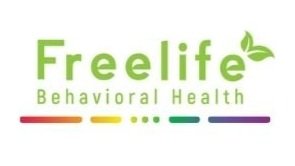Breaking the Stigma: Why Therapy Matters for Black and POC Communities
For too long, therapy has been seen as something "not for us" in Black and POC communities.
Whether it’s because of deep-rooted cultural beliefs, lack of access, or simply not seeing enough therapists who get it, mental health care often takes a back seat.
But here’s the truth—our communities have been carrying cultural trauma for generations, and healing that trauma starts with breaking the stigma around therapy. Let’s dive into what cultural trauma actually is, how it affects us, and what we can do to heal.
What is an example of a cultural trauma?
Cultural trauma happens when a group of people experiences collective harm—whether from racism, colonization, forced displacement, or other oppressive systems.
The effects don’t just disappear with time; they pass down through generations, shaping how communities see themselves and interact with the world.
Examples of cultural trauma include:
The transatlantic slave trade and its aftermath – The forced removal of Africans from their homelands and centuries of systemic oppression created long-lasting wounds for Black communities worldwide.
The internment of Japanese Americans during World War II – Families were uprooted, businesses lost, and trust in the government shattered.
Indigenous boarding schools – Native American children were forcibly taken from their families and stripped of their language and culture, leaving deep scars in Indigenous communities.
These are just a few examples, but cultural trauma exists in many forms and affects countless marginalized groups. The pain doesn’t end when the traumatic event is over—it lingers, shaping mental health, identity, and generational well-being.
What is the difference between cultural trauma and collective trauma?
It’s easy to confuse cultural trauma with collective trauma, but they’re not quite the same.
Cultural trauma is specific to a particular group’s shared identity. It affects cultural practices, self-perception, and even how a group is viewed by the outside world.
Collective trauma, on the other hand, is a broader term that refers to a traumatic event affecting large groups of people, regardless of identity. Natural disasters, terrorist attacks, or global pandemics can create collective trauma, but they don’t necessarily target a specific cultural group.
For example, the COVID-19 pandemic created collective trauma worldwide, but the racial disparities in healthcare outcomes and economic impact created cultural trauma for Black and POC communities. Understanding this difference helps us address healing in ways that acknowledge both the shared and unique struggles our communities face.
How to heal cultural trauma?
Healing cultural trauma isn’t just about addressing personal struggles—it’s about healing as a community. Here’s how we can start that process:
Acknowledge the trauma – The first step to healing is recognizing that cultural trauma is real and valid. Many of us grow up being told to “just deal with it,” but ignoring trauma doesn’t make it disappear.
Reclaim cultural identity – Many communities have had their languages, traditions, and histories stripped away. Reconnecting with those roots—whether through language, art, or storytelling—can be a powerful act of healing.
Seek culturally competent therapy – Therapy should feel like a safe space, and that means working with professionals who understand the layers of identity, race, and systemic oppression. Finding a therapist who specializes in cultural trauma can make all the difference.
Engage in community healing – Healing doesn’t always happen in isolation. Support groups, activism, and cultural events can be spaces where healing happens collectively.
Break generational cycles – Many of us grew up in households where talking about mental health was off-limits. By seeking therapy, prioritizing self-care, and encouraging open conversations, we can create healthier spaces for future generations.
What is historical and cultural trauma?
Historical trauma and cultural trauma are closely linked but slightly different.
Historical trauma refers to the collective suffering experienced by a group due to past events. This trauma often leaves lasting effects on future generations, influencing everything from mental health to economic opportunities.
Cultural trauma stems from these historical traumas but focuses on how they impact a group’s identity and traditions. It’s about the long-term emotional, psychological, and cultural wounds that come from being systematically oppressed, erased, or displaced.
For example, the forced removal of Indigenous peoples from their lands is historical trauma. The ongoing struggles of Indigenous communities to maintain their languages, traditions, and sovereignty despite continued oppression?
That’s cultural trauma.
Understanding these concepts helps us see why therapy is essential for healing—not just for individuals, but for entire communities.
Meet Julleon Garrison, LCSW
If you’re looking for a therapist who understands cultural trauma, meet Julleon Garrison.
As a Black queer therapist, he knows that navigating identity, mental health, and systemic oppression isn’t easy. He brings both lived experience and professional expertise to his practice, creating a space where BIPOC individuals feel seen, heard, and understood.
Julleon holds a Bachelor of Arts in Psychology from Philander Smith University (an HBCU, where he focused on Black Psychology) and a Master of Social Work from the University of Wisconsin Oshkosh. His work centers around supporting marginalized communities, including those navigating ADHD, BPD, identity struggles, and systemic barriers.
Whether you're dealing with anxiety, depression, or the weight of cultural trauma, he’s here to help you heal and thrive.
The Importance of Therapy in Marginalized Communities
Therapy isn’t just about dealing with crises—it’s about creating a space for healing, growth, and breaking cycles of trauma.
In Black and POC communities, where cultural trauma runs deep, therapy can be a revolutionary act of self-care. It’s about reclaiming mental wellness, addressing past wounds, and building a future where healing is prioritized.
Too often, we’re told to just “push through” or that therapy is “not for us.” But mental health care is for us. And finding culturally competent therapists—like Julleon—can make all the difference.
Cultural trauma is real, but so is resilience. And the more we normalize therapy, the closer we get to breaking the stigma for good.
